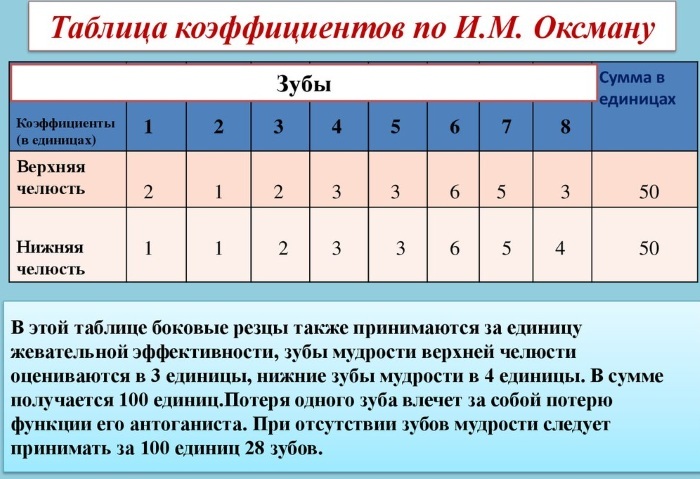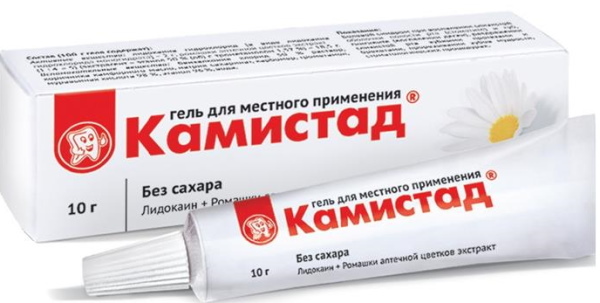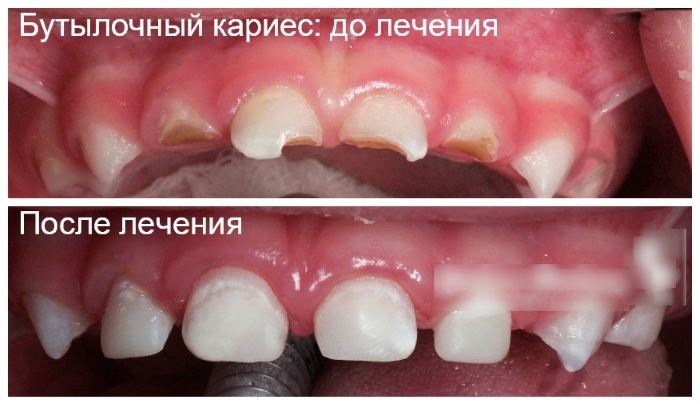Pulpitis is an inflammatory process of the inner tissue of the tooth. (pulp), which is located inside the stem canal, has nerve endings and vascular bundles. The function of the pulp is to fill the hard tissues inside the tooth with nutrients. It is necessary to treat pulpitis immediately, starting with preventive methods at home and ending on an outpatient basis.
Record content:
- 1 Views
- 2 Stages and degrees
- 3 Symptoms of the disease
- 4 Reasons for the appearance
- 5 When to see a doctor
- 6 Prophylaxis
-
7 Treatment methods
-
7.1 Medications
- 7.1.1 Antibacterial drugs
- 7.2 Traditional methods
-
7.1 Medications
- 8 Possible complications
- 9 Pulpitis video
Views
Pulpitis is divided into several types: chronic and acute. Each form has its own subtypes, with the correct diagnosis of which the effectiveness of the treatment process increases.
Chronic pulpitis is a prolonged inflammation of the tooth bundle and nerves, which leads to structural changes. The inflammatory process is characterized by a duration (up to 4 weeks) and a sluggish course of the disease, which leads to an exacerbation and the emergence of the following type.
Acute pulpitis is an acute inflammatory reaction of the dental pulp to damage. The disease is accompanied by a high degree of pain. The attacks intensify and intensify at night.
Stages and degrees
In chronic pulpitis, there is a gradual destruction of the dental crown and jaw tissues. If the patient ignores the first symptoms of the disease and does not treat pulpitis with a specialist and at home, then deterioration occurs.
Chronic stages:
- Fibrous - the nerve endings thicken, there is heaviness in the gums (with a timely visit to the doctor, the nerve processes can be saved);
- Hyperplastic - bacteria penetrate into the pulp chamber, soft tissues are damaged, black spots appear on the crown (pain increases, in the absence of depulpation, the tooth requires removal);
- Hypertrophic - more often manifests itself in adolescence, polyps, cysts and granulomas appear in the cavity of the chamber, the gums bleed, aches and "shoots" the focus of inflammation;
- Gangrenous - severe stage, when the roots of the tooth are completely damaged, the inflammatory process is activated in the bones and joints of the face. Even after the disease is eliminated, there is a high risk of other health problems (intoxication, blood poisoning, brain inflammation).
With an exacerbation of pulpitis in an acute form, a focal stage occurs, which lasts several days and is characterized by increased pain during palpation of the tooth, taking cold / hot food. The pain is short-term, wavy, it is easy to determine the place of damage.
The process of inflammation in the diffusion stage is activated in the root part of the pulp and covers the crown. The attacks intensify and last about 30-40 minutes. If, when using cold, the pain subsides, this indicates the onset of a purulent form of the disease. The duration of the stage is 14 days, after the violation becomes chronic.
Symptoms of the disease
Chronic pulpitis. Symptoms are similar to those of an inflammatory process such as triple nerve neuralgia. In the stage of exacerbation, spasmodic attacks appear, which become stronger with palpation of the tooth (pressing on it while eating food or clenching the jaw).
Acute pulpitis. At the very beginning of the disease, acute pain occurs, which intensifies every day. Over time, paroxysmal soreness of a constant or periodic nature appears. Intensifies closer to night. At the moment of tapping on the tooth, discomfort is not felt.
In the stage of exacerbation of pulpitis, immunity decreases, spasms spread throughout the face - the jaw, chin, trigeminal nerve. It is important to immediately consult a doctor to stop the process of bacteria penetrating into a weakened body.
Reasons for the appearance
Pulp damage most often occurs under the influence of external factors. Inflammation can be caused by caries or a crack that forms on the surface of the tooth. As a result, microbes enter the carious cavity and enter the pulp.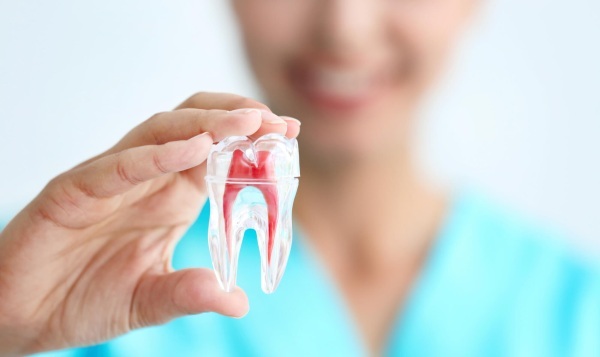
No less common chemical factors:
- burn during tooth treatment;
- trauma when placing the crown;
- the toxic effect of the filling;
- the use of strong antiseptics when treating the oral cavity.
Also, the cause of the disease can be a pronounced pathological abrasion of the teeth, which in the presence of osteoporosis or diabetes mellitus leads to the "exposure" of the pulp chamber. As a result of any of these influences, irritation and infection of the tooth tissues occurs, and a chronic or acute focus of inflammation is formed.
When to see a doctor
Pulpitis (home treatment will be effective with an accurate diagnosis of the disorder), and therefore it is important in the event of bleeding or painful palpation of the tooth, seek help from a doctor to the dentist.
The diagnosis is based on typical complaints that arise during the development of the disease (patient survey). In the process of instrumental examination, a carious cavity is revealed, where softened dentin is located.
For a more accurate diagnosis, an X-ray of the dental cavity is performed. The specialist examines the image and determines the shape of the pulpitis, type, stage of the disease. Magnetic resonance imaging may be required if necessary. After that, a comprehensive treatment regimen for the disease is prescribed.
Prophylaxis
To avoid the transition of an acute form of pulpitis to a chronic one, it is important to seek the help of a dentist at the first symptoms of deterioration in health.
Several rules should be attributed to preventive actions:
- brush your teeth in the morning and in the evening using high-quality toothpastes (which should contain fluoride and calcium);
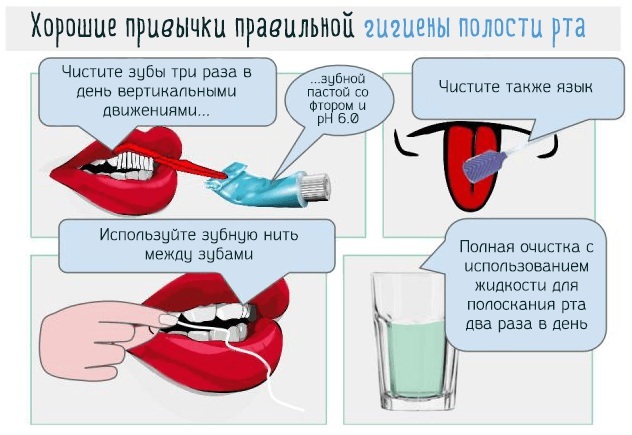
- change the toothbrush every 1-2 months (rinse with boiling water before use);
- for high-quality removal of food debris, use dental floss;
- once a year, carry out a preventive examination of the oral cavity by a specialist;
- teach children not to gnaw sharp, hard objects (cracking nuts, gnawing pen caps, nails, etc.).
- do not start the development of carious processes in the oral cavity.
It is equally important to pay attention to nutrition, to minimize the use of foods that are harmful affect tooth enamel (strong coffee, chocolate, confectionery, carbonated drinks, concentrated juices). Introduce herbal products into the diet.
Also, you should not try to whiten teeth at home with soda, hydrogen peroxide, citrus juice. As a result, not only will the enamel of the tooth weaken, but also the acid will have a detrimental effect on the digestive system.
Treatment methods
It is possible to save the life support system for the tooth with the conservative treatment of pulpitis. The primary task is to eliminate the inflammatory process.
Modern techniques offer several options for the patient's recovery:
- Biological - when the damage to the tooth is assessed as minimal, in this case, the affected tissues are removed, and the inflamed areas are treated with antiseptics and anti-inflammatory agents.
- Surgical - full or partial extraction of pulp from the oral cavity. The ampoule technique can be used, when only the coronal part of the pulp is removed, and the root remains in place.
Such procedures require from 2 to 4 visits to the doctor, for the purpose of prevention, a drug is prescribed anti-inflammatory therapy, which is carried out outside the hospital, requires periodic monitoring the doctors.
Medications
Pulpitis (home treatment will reduce the symptoms of the disorder and improve the dental tissue), however, it is important to control the process by a specialist in order to avoid complications. The following medications will help relieve swelling, reduce pain and slow down the inflammatory process.
Also, pharmaceutical compositions are used in the acute stage of the disease, as an analgesic and preventing the spread of infection to other areas of the oral cavity.
| Name | Description | Dosage | Efficiency | Price |
| Ketorol | Non-steroidal anti-inflammatory drug, green film-coated tablets. | Take up to 2 tablets at a time, no more than 3 times a day | Has a pronounced analgesic, anti-inflammatory and antipyretic effect 60 minutes after application | About 80 rubles. per packing |
| Nimesulide | Anti-inflammatory drug for the relief of acute pain | 1 tablet (but not more than 6) every 4-8 hours. | Works within 10-15 minutes after ingestion | About 110 rubles. |
| Ketanov | Non-narcotic analgesic, has a weak antipyretic activity | To eliminate severe pain, it is allowed to take 2 tablets with a break of 6 to 8 hours. | Peak 30 minutes after application | about 90 rubles |
| Indomethacin | Prevention of inflammatory processes in the body | 1-2 tab. up to 4 times a day | Provides noticeable relief after taking a pill in 1-2 hours | 120 RUB per packing |
| Pentalgin | Has a pronounced antimicrobial and analgesic effect | The maximum dosage is 3 tablets. per day | For the relief of an acute attack, the effectiveness of the drug occurs 30 minutes after ingestion. | RUB 100 |
| Nurofen tablets | Symptomatic treatment of different types of pain | 2 tablets no more than 6 times a day | Peak activity occurs 40 minutes after fasting | about 200 rubles |
| Diclofenac | Analgesic, relieves inflammation | 150 mg per day, the daily dose is divided into 3 doses | Has a pronounced activity after 1-2 hours after ingestion | RUB 60 per packing |
Antibacterial drugs
If the disease has intensified against the background of a complication of caries, in which there is an open cavity in the tooth, then it is recommended to use it together with anti-inflammatory drugs and antimicrobial agents:
- Sanguinarine. The medicinal composition is aimed at the destruction of pathogenic cells. It is used as a rinse 2-3 times a day. The liquid needs to be kept in the mouth for about 3 minutes for better treatment. The cost of packaging is about 220 rubles.
-
Betadine. The cream is applied in a thin layer to the affected areas. No more than 2-3 times a day. Can be used under a bandage, tampon. Cost - from 250 to 480 rubles.
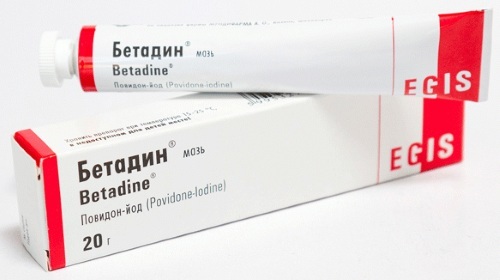
- Dentinox. Available as drops. Applications are performed up to 3 times a day, after meals and before bedtime. Cost - 350 rubles.
- Denta. Dental drops for pain relief and refreshing of the oral cavity. Applications are applied every 4 hours. On average, five minutes. Cost - 40 rubles.
- Betadine. Sold as a cream. Apply up to 2 times a day to the affected area. The cost is about 500 rubles.
It is important to consider possible side effects and contraindications when using each drug.
Attention! It is forbidden to heat the affected area, in order to avoid activating the inflammatory process, which in turn can lead to more serious consequences.
Traditional methods
Pulpitis (treatment at home using traditional methods can be used as an auxiliary element of conservative therapy), to alleviate the patient's condition before visiting the dentist.
Important! The period of self-treatment should not exceed 3 days, which is fraught with an increase in the risk of developing phlegmon and blood poisoning.
The complex of wellness procedures includes such methods as rinsing the mouth, rubbing, lotions, compresses, applications to the affected areas.
Effective folk remedies:
-
Clove oil. Has analgesic properties, helps to get rid of pain in a short time. With the entire crown of the tooth, the oil is applied pointwise. Enough 4-5 drops under a gauze bandage. It should be on a sore tooth for about 5-7 minutes. If there is a cavity in the tooth, then for a better effect, the drops must be dripped inside.

- Propolis. To relieve pain attacks, it is necessary to form a ball from medicinal raw materials and put it into the formed cavity in the tooth. Leave until completely dissolved.
- Grated ginger and soda. Baths of these products destroy pathogenic flora and stop the inflammation process. You need to finely grate the ginger and pour boiling water over it. After the liquid has cooled, add a teaspoon of baking soda. Perform the rinsing procedure for about ten minutes.
- Hydrogen peroxide. Helps remove bacterial plaque. Dilute the liquid from the ratio to 200 ml of water 1 tsp. Rinse the mouth 2 times a day.
- Alcohol tincture of propolis and calamus marsh. The product ensures the destruction of germs and numbes the damaged area. You need to take 30 g of propolis and 15 g of crushed calamus, mix with a quarter liter of alcoholic liquid. It will serve as a rinse aid: use 2 tbsp for 200 ml of water. the resulting tincture.
- Pomegranate peel decoction. The tool helps not only to relieve inflammation, but also prevents the development of complications. You will need a peel from two pomegranates. Place the cleaned raw materials in hot water for 2 hours. After the broth, use at least 5-6 times a day.
- Bay leaf trays. To prepare a decoction of 10 bay leaves, pour 250 ml of boiling water. Rinse your mouth several times a day, at least 5 minutes in one go.
- Garlic juice. Grind a few cloves of garlic and rub the resulting juice into the damaged gum. Before the procedure, be sure to disinfect your hands or use antiseptic gloves.
- Aloe leaf. Apply a clean sheet of aloe to the damaged tooth, keep it for 30 minutes, change the medicinal raw material if necessary and continue the application.
The described homeopathic remedies can cause allergic reactions (rash, irritation), and therefore it is important to test a small area of the skin before using them.
Possible complications
Pulpitis (home treatment can lead to the development of periodontitis), which threatens the complete loss of a tooth. The outcome of self-medication can be favorable only at an early stage of the development of the disease and strictly under the supervision of a doctor.
Attention! Prolonged absence of specialized therapy can lead to the following complications.
- Inflammation in the ligaments of the tooth, which can provoke the development of a purulent process and infection of the whole organism.

- Pathological changes in the appearance of the jaw.
- The activation of various diseases in a chronic form due to the penetration of harmful bacteria inside.
- Nervous disorders on the background of excruciating toothache.
- Purulent inflammation of the bone marrow, which can provoke septic complications and general blood poisoning.
There may also be malfunctions in the functioning of the tooth after pulpitis treatment. This is its gradual darkening and increased fragility. There is only one way out - to install a crown to hold the tooth in place.
Complete treatment of pulpitis is possible only when contacting a competent specialist. In this case, there is a risk of relapse. It is important to follow preventive measures and strictly follow the doctor's recommendations.
As a result of the neglected treatment of pulpitis at home, you can not only lose a tooth, but also cause acute intoxication of the body. In order to avoid complications, it is important to visit the dentist in a timely manner and not to endure a toothache.
Pulpitis video
Why pulpitis occurs and how to treat it painlessly

